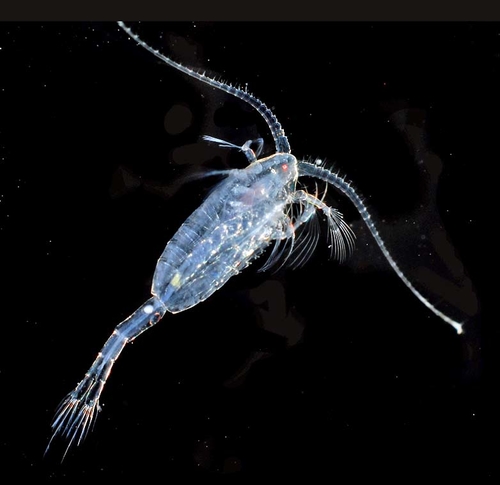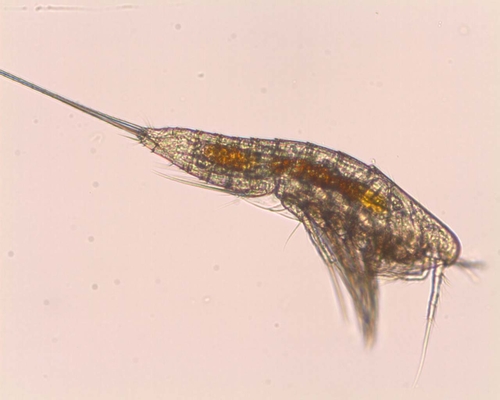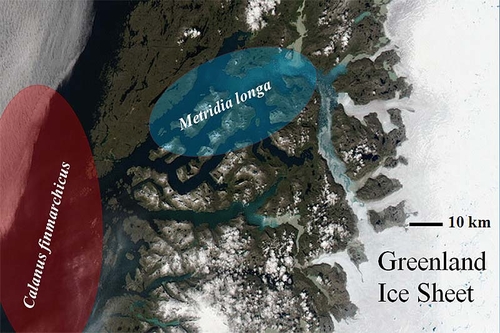Differences in plankton community structure and in chemical and physical gradients between the offshore WestGreenland Current system and inland regions in Nuup Kangerlua (Godthåbsfjorden) Published 04.12.2020

ABSTRACT from Marine Ecology Progress Series
This study describes differences in plankton community structure and in chemical and physical gradients between the offshore West Greenland Current system and inland regions close to the Greenland Ice Sheet during the post-bloom in Godthåbsfjorden (64°N, 51°W). The offshore region had pronounced vertical mixing, with centric diatoms and Phaeocystis spp. dominating the phytoplankton, chlorophyll (chl) a (0.3 to 3.9 µg l–1) was evenly distributed and nutrients were depleted in the upper 50 m. Ciliates and heterotrophic dinoflagellates constituted equal parts of the protozooplankton biomass. Copepod biomass was dominated by Calanus spp. Primary production, copepod production and the vertical flux were high offshore. The water column was stratified in the fjord, causing chl a to be concentrated in a thin sub-surface layer. Nutrients were depleted above the pycnocline, and Thalassiosira spp. dominated the phytoplankton assemblage close to the ice sheet. Dinoflagellates dominated the protozooplankton biomass, whereas copepod biomass was low and was dominated by Pseudocalanus spp. and Metridia longa. Primary production was low in the outer part of the fjord but considerably higher in the inner parts of the fjord. Copepod production was exceeded by protozooplankton production in the fjord. The results of both physical/chemical factors and biological parameters suggest separation of offshore and fjord systems.
Kristine Engel Arendt1,*, Torkel Gissel Nielsen2,4, Søren Rysgaard1, Kajsa Tönnesson3
1Greenland Climate Research Centre, Greenland Institute of Natural Resources, PO Box 570, Kivioq 2, 3900 Nuuk, Greenland
2National Environmental Research Institute, Department of Marine Ecology, University of Aarhus, Frederiksborgvej 399, 4000 Roskilde, Denmark
3Department of Marine Ecology – Göteborg, University of Gothenburg, Box 461, 405 30 Göteborg, Sweden
4Present address: National Institute of Aquatic Resources, DTU Aqua, Section for Ocean Ecology and Climate, Technical University of Denmark, Kavalergården 6, 2920 Charlottenlund, Denmark

The copepod Microsetella norvegica eats”marine snow”. Length of body app. 0.7 mm. Photo: Kristine Engel Arendt.

In the sea west of Nuuk the copepod Calanus finmarchicus is dominating. This is an Atlantic species, transported by the West Greenlandic sea current in large numbers. In the fjord copepod species Metridia longaand the small untypical Microsetella norvegica are dominating. Map GINR.

